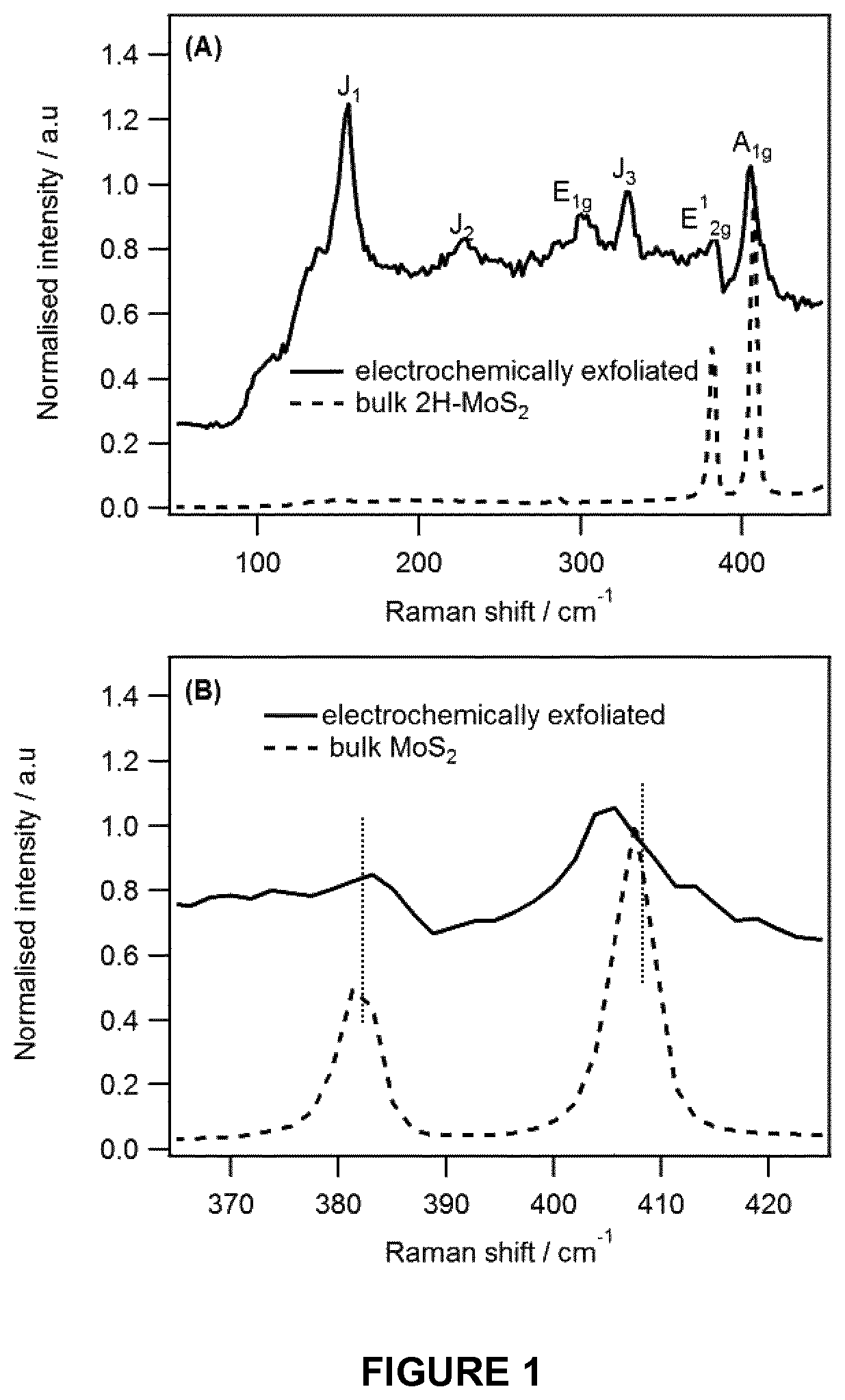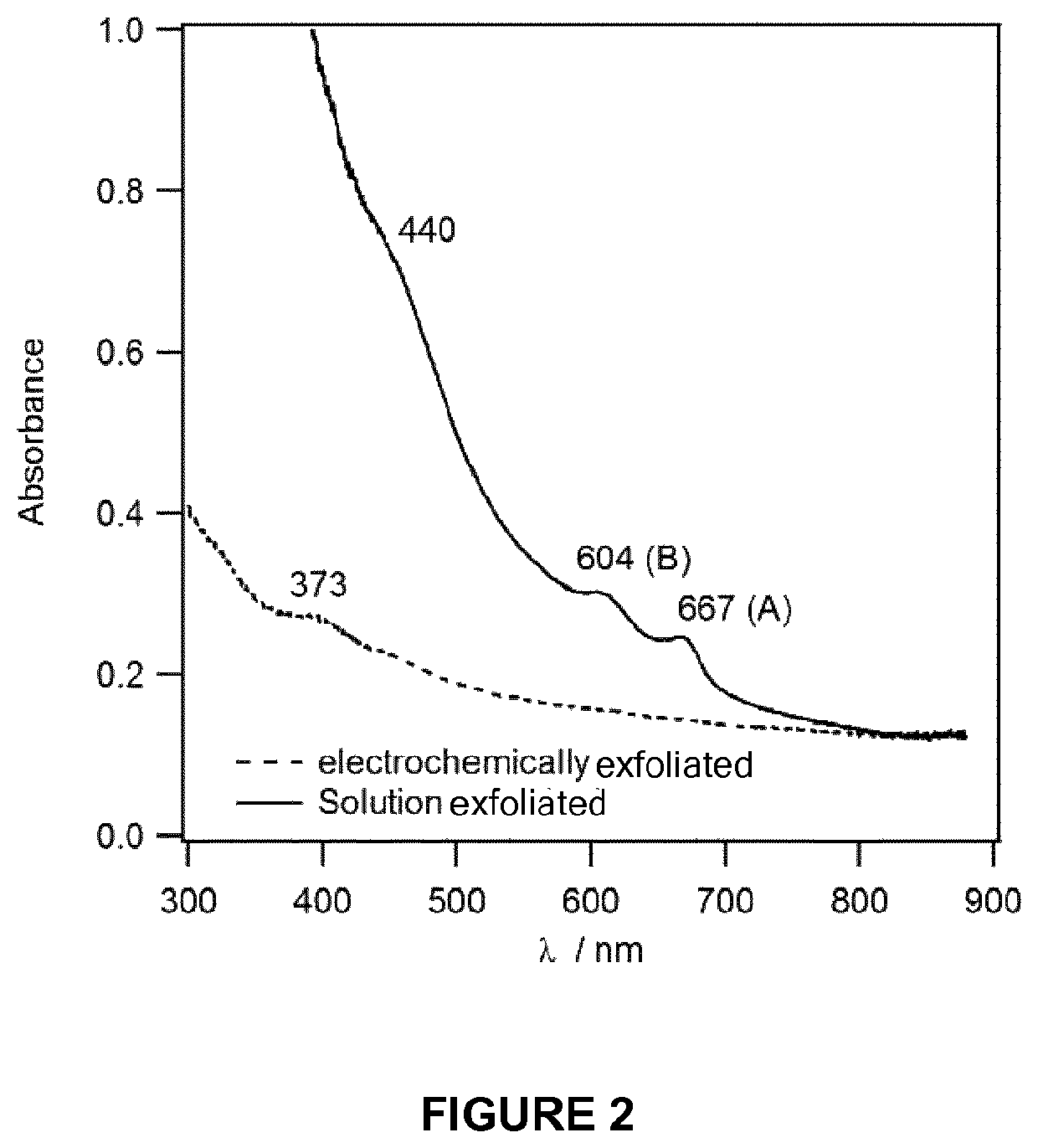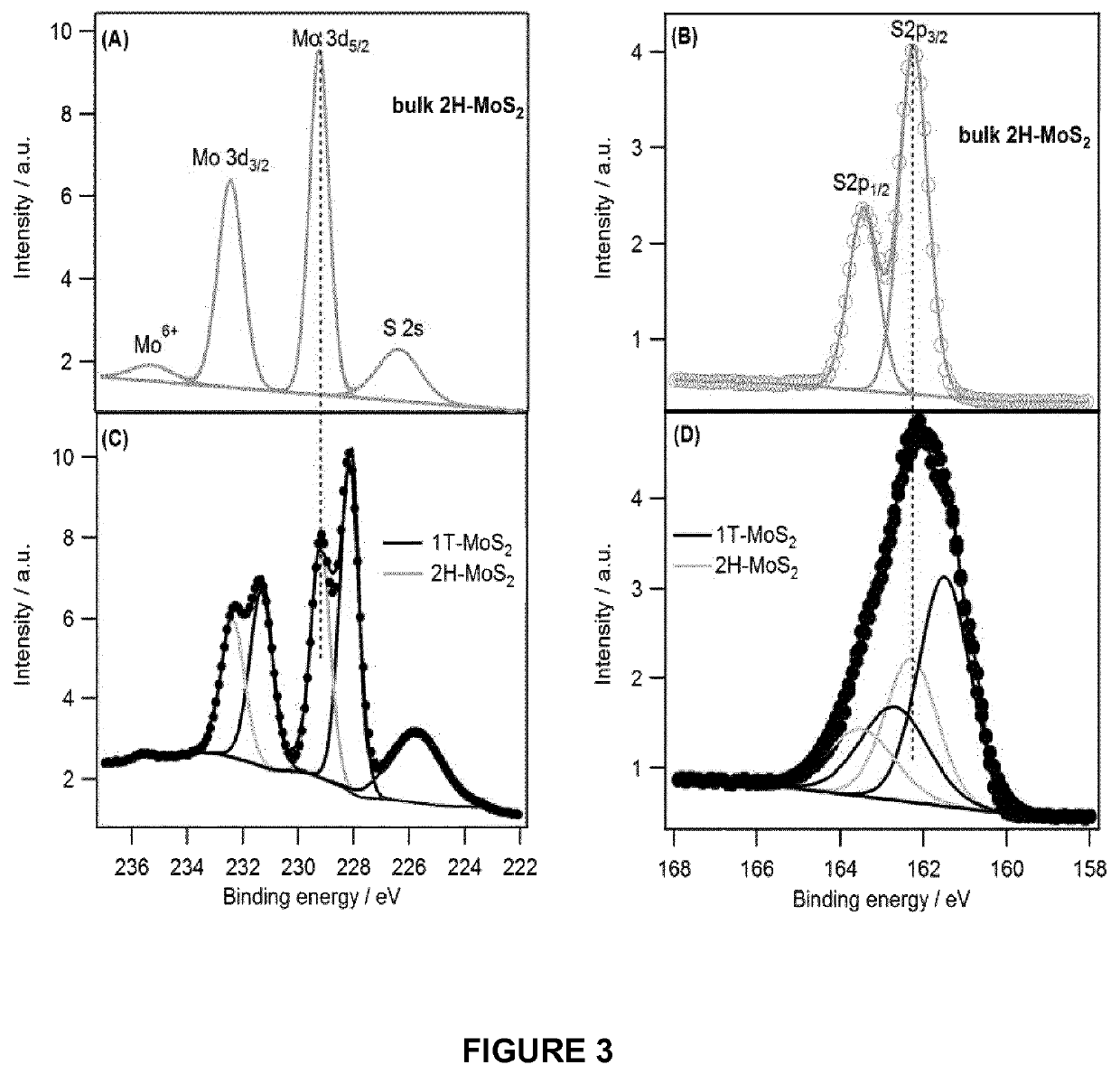1T-phase transition metal dichalcogenide nanosheets
a transition metal and nanosheet technology, applied in the direction of molybdeum compounds, carbon-silicon compound conductors, chemistry apparatus and processes, etc., can solve the problems of short time scale, less useful for electronic applications, and high air and moisture resistance of organic lithium compounds
- Summary
- Abstract
- Description
- Claims
- Application Information
AI Technical Summary
Benefits of technology
Problems solved by technology
Method used
Image
Examples
examples
[0083]Production of 1T-MoS2 Nanosheets
[0084]An electrochemical cell having a MoS2 pellet (Sigma, 99% with an average particle size of 6 μm) or a MoS2 natural crystal working electrode, a Pt mesh counter electrode and an Ag wire reference electrode was used. The electrolyte was 1 M LiClO4 in a mixture of dimethyl carbonate (DMC) and ethylene carbonate (EC) in one to one volume ratio. The potential of an Ag wire was stable within a few mV for over 4 h. The MoS2 pellet (12 mm diameter) was made by hydraulic press of the powder (0.4-1.0 g) at 2.5 tons. Prior to performing electrolysis, N2 gas was bubbled into the electrolyte for 30 min and during the electrochemical measurements an atmosphere of N2 was maintained above the electrolyte.
[0085]Electrochemical intercalation of Li+ was performed using chronoamperometry by applying a potential of −4.5 V vs Ag wire for 2 hr. The intercalated pellet was then rinsed with acetone and inserted immediately into deionised deoxygenated water for exfo...
PUM
| Property | Measurement | Unit |
|---|---|---|
| time | aaaaa | aaaaa |
| lateral size | aaaaa | aaaaa |
| thickness | aaaaa | aaaaa |
Abstract
Description
Claims
Application Information
 Login to View More
Login to View More - R&D
- Intellectual Property
- Life Sciences
- Materials
- Tech Scout
- Unparalleled Data Quality
- Higher Quality Content
- 60% Fewer Hallucinations
Browse by: Latest US Patents, China's latest patents, Technical Efficacy Thesaurus, Application Domain, Technology Topic, Popular Technical Reports.
© 2025 PatSnap. All rights reserved.Legal|Privacy policy|Modern Slavery Act Transparency Statement|Sitemap|About US| Contact US: help@patsnap.com



